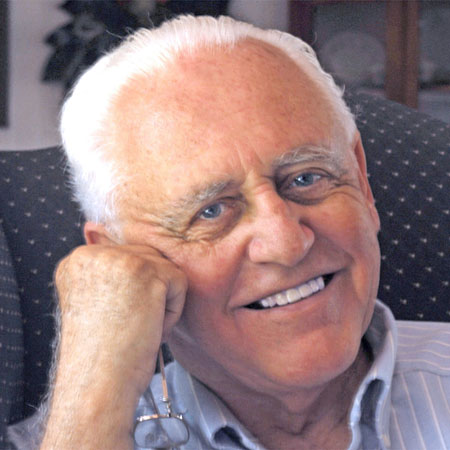BRUCE ROBERTS is former Director of Photography and Senior Photographer at Southern Living Magazine in Birmingham, Alabama. Before joining Southern Living he was a member of the legendary 1960s photo staff of The Charlotte Observer, which pioneered the use of the 35-mm camera and natural light for newspaper photography. During this time he received numerous awards for his photography in state and national competitions. Bruce has twice been named Southern Photographer of the Year. Bruce freelanced for Time Life Books, Sports Illustrated, as well as both Time and Life Magazines. His photography has appeared in a number of books including Where Time Stood Still: A Portrait of Appalachia, picked by the New York Times as one of the best children’s books for 1970, The Face of North Carolina, and You Can’t Kill the Dream.

BRUCE ROBERTS
For over twenty years lighthouses have become his favorite subject. His renowned lighthouse photography has appeared in hundreds of books and magazines including Southern Lighthouses and American Lighthouses.
He has been coauthor and illustrator of several southern ghost books including Lighthouse Ghosts. Bruce is also a recipient of the "Keeper of the Light" award from the American Lighthouse Foundation for his preservation work as co-founder of the Outer Banks Lighthouse Society.
Bruce and his wife, Cheryl, live on the coast of North Carolina, and enjoy visiting the lighthouses. When you visit the "Books" selections on this website, you'll see that together, Bruce with his photography and Cheryl with her wonderful writing and research skills, have published a good number of wonderful lighthouse books.
In this new book, Just Yesterday, Bruce exhibits his life-long love for uncelebrated people and his admiration for their efforts to make life better for others. The subjects he has chosen as a photojournalist witness his creative genius to judge what is important in life as well as his innate ability to use natural light to capture these timeless images. His photography looks into the eyes and souls of those who quietly made a difference: the teachers, country doctors, nurses, policemen--those who seldom made headlines in newspapers or magazines. He expresses his appreciation to all those who allowed him to take their photographs and to be able to share them with present and future generations.
Reg Murphy, editorial page Editor of the Atlanta Journal and Constitution, wrote in 1968, “One day last summer, Bruce Roberts flew from his home in Charlotte to Atlanta to photograph a magazine story. Working almost nonstop for 36 hours, Roberts exposed 27 rolls of film. The end product was one superb photograph of an Atlanta policeman working in the slums. It is that kind of relentless effort that has made him one of the best in his profession. But it is also compassion, the kind of compassion that allows a parent to live and love a child who is retarded. That makes him the artist he is.”
Lighthouse Digest did an article on Bruce in May 2005 titled Capturing the Beauty. Editor Tim Harrison and his staff judged him as one of America’s best all-time lighthouse photographers. Along with his picture at Pt. Reyes Lighthouse and holding his camera, it quotes: “I was asked why I became a photographer when I was fourteen-years-old. My father told me not to do it; there wouldn’t be enough money in it. That made me determined to be successful.” Later, he expounded on the subject of becoming a photographer at such a young age. “I delivered newspapers on cold New York mornings so I could buy my own photo paper and developing chemicals. I studied the instructions on the package, set up two pans in the basement of our house in Watertown, and taught myself to develop film. All my life, I’ve been happiest in the darkroom. I earned my way through New York University by taking pictures at parties and board meetings. While friends partied, I developed and sold my pictures. It became a way of life and I couldn’t wait to get to my next subject. I dreamt of moving to North Carolina and beginning what I considered my real career -- photographing the South.”
John Logue, Editor of Southern Living Magazine, spoke of Bruce in his column Books in Review. “To call Bruce Roberts a photographer is to understate the facts. His camera is a philosophy, a veritable vehicle of photography… His pictures are worth 20,000 words.”
Many of Bruce’s negatives are now archived at The Center for American History at the University of Texas at Austin.